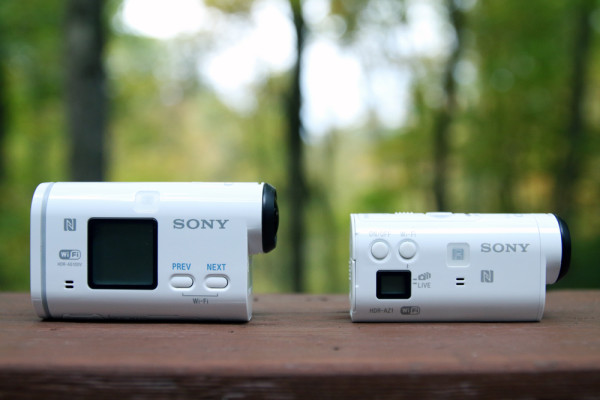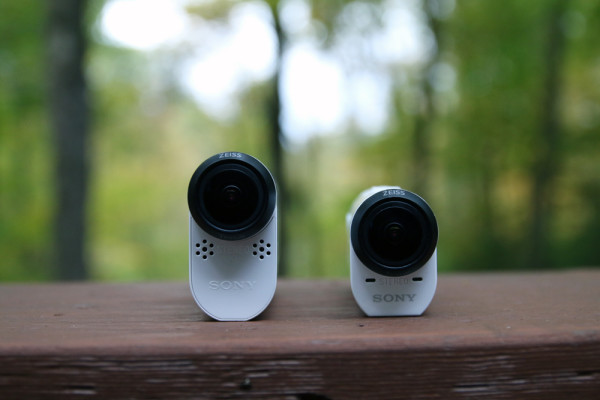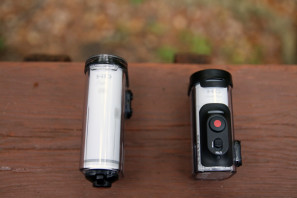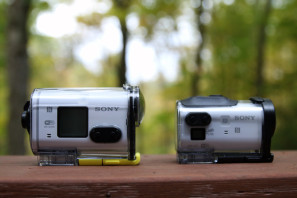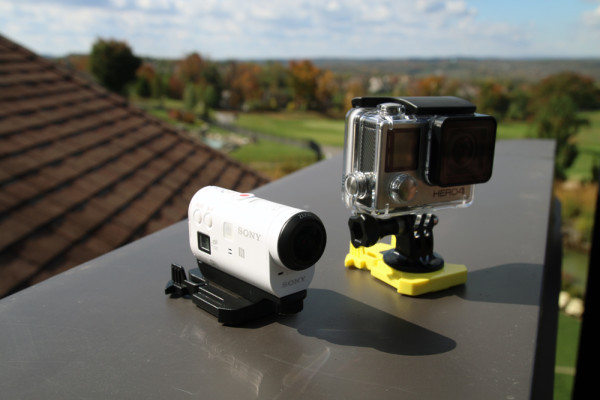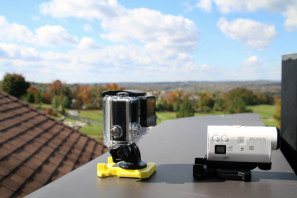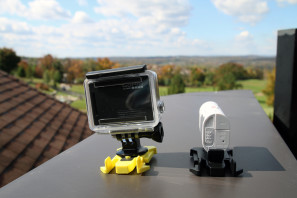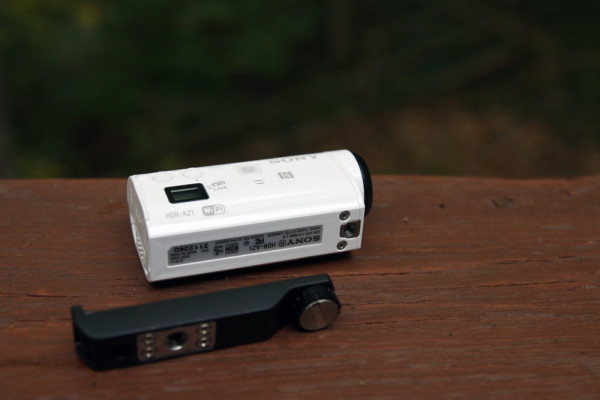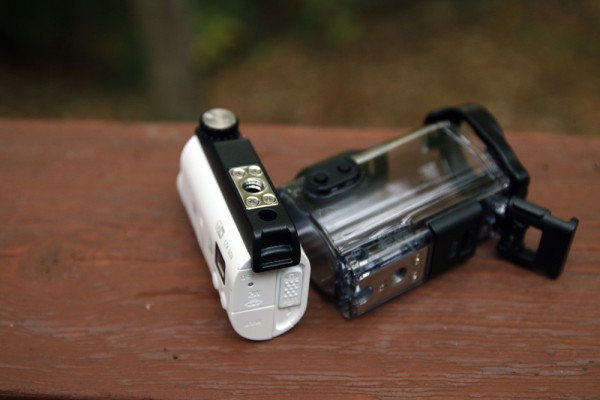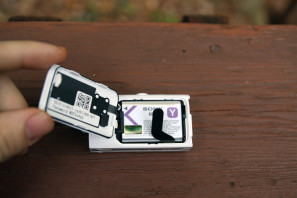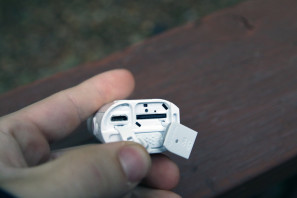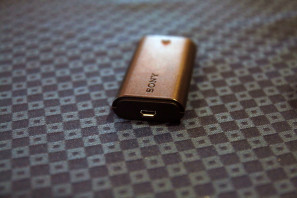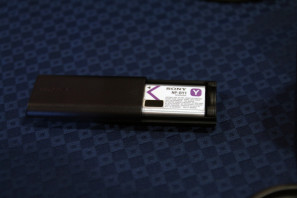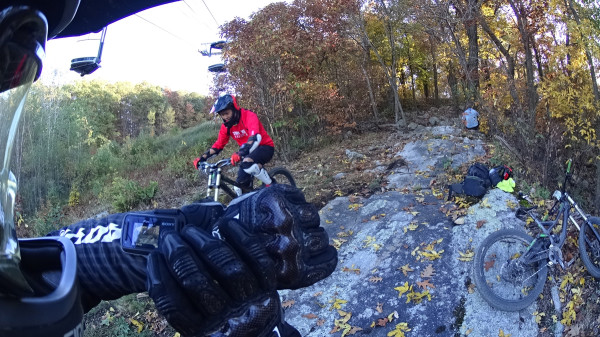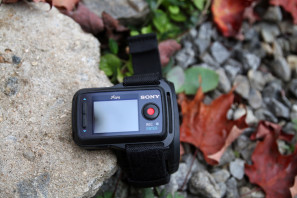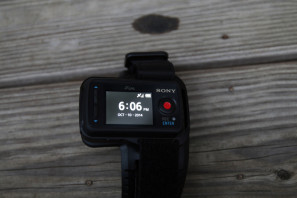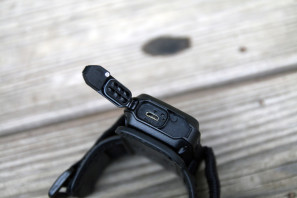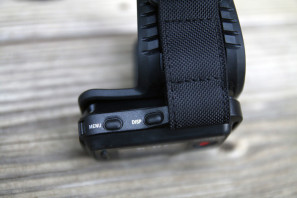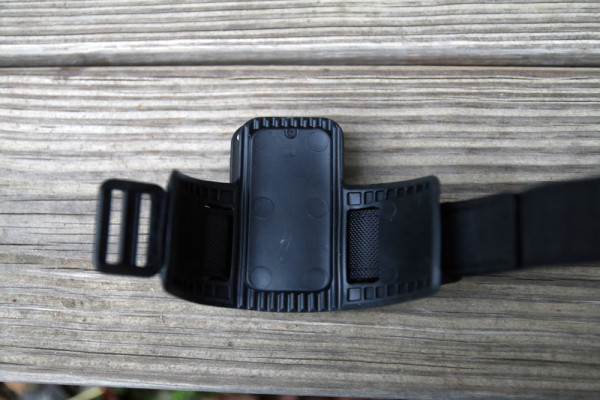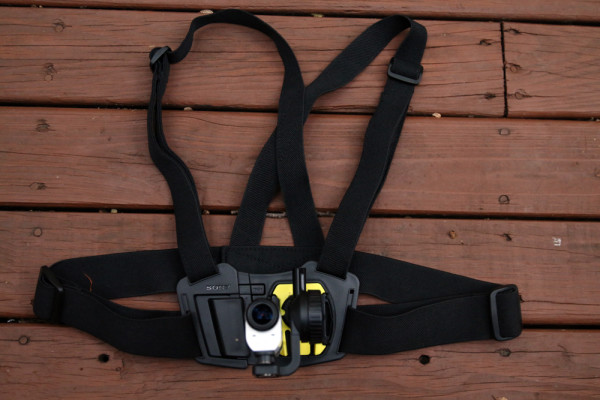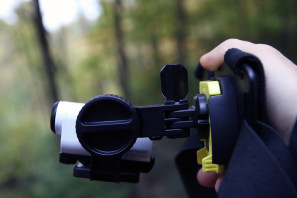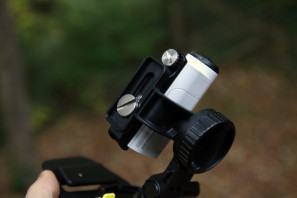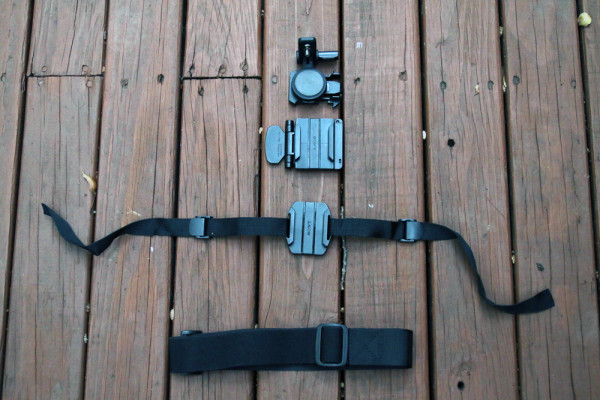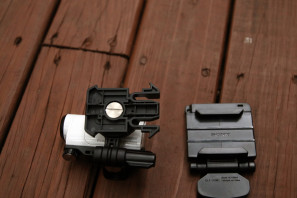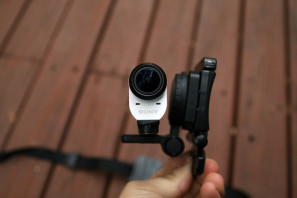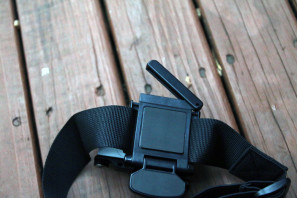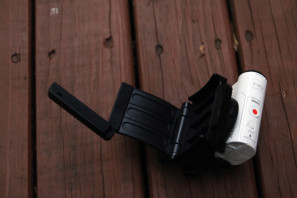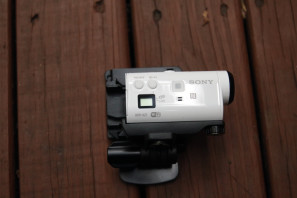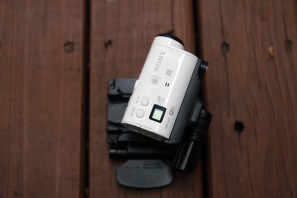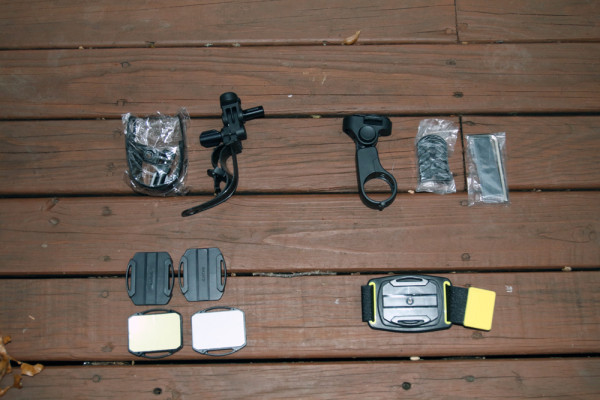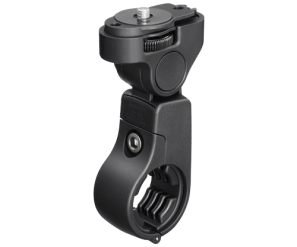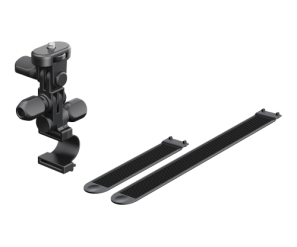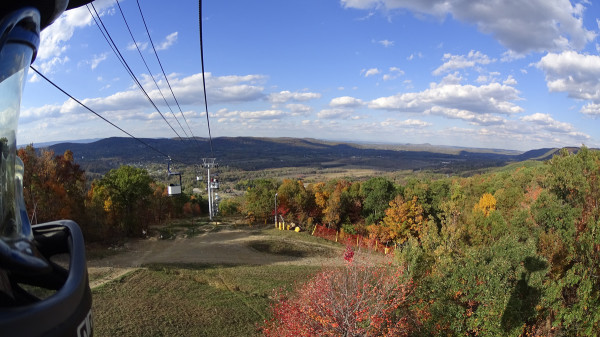Let’s be real for a moment. You can have the most feature packed action camera around, but if it isn’t easy to use you’ll end up with a bunch of boring footage that’s probably either of the ground or the sky. The introduction of the smart phone app and wireless capabilities was a huge step forward in terms of being able to properly capture the actual action, but they still leave things to be desired – connecting can be troublesome, and you still have to do something with your smartphone once you start riding. To keep you from having to constantly dig into your bag to fish out your phone, many cameras are paired with wrist or handlebar mounted remotes that allows you to control the recording.
Even so, wouldn’t it be more convenient if the same functions were available in a single wrist mounted remote?
That seems to be what Sony is thinking and is exactly what they offer with the new Action Cam Mini AZ1. In addition to the live view remote, the camera is 30% smaller than the original AS20 and the replacement AS100V. The smaller size means you can stick it just about anywhere to create some creative videos while simultaneously controlling it from your wrist. Sony brought us out to Northern New Jersey for a crash course in the new camera which included mountain bikes, mountain coasters, and even archery.
After just a day playing with the Action Cam Mini, we can’t help but think GoPro has some serious competition…
The Live View might be the most exciting bit of the new design, but the actual size of the camera can’t be ignored. Even with the waterproof ( 5.0m/16 feet) housing, the Action cam Mini is one of the smallest on the market. Take off the housing, and it feels impressively small and since the new body is splash proof you can run it without the housing. What does splash proof mean? We’re told normal mountain bike conditions should be fine, even if you were to briefly drop it in a puddle or stream. Just don’t go surfing without the waterproof housing.
If you want to go scuba diving Sony currently sells an additional dive housing for the larger AS100V which is waterproof to 60M/197 feet so we wouldn’t be surprised to see something for the Mini in the future. Want to run the mini without the housing, but are concerned about the lens? Sony also has an additional hard cover protector for the lens to keep it safe. We have to say that while it’s good to have the option, the lens seems to be extremely durable.
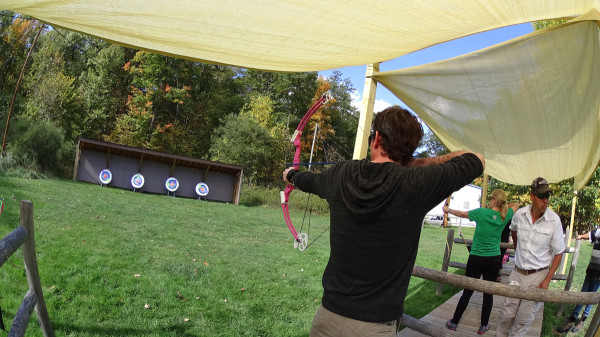
During our time at the archery range we were literally taping the cameras to the shafts of arrows and firing them at the targets. Turns out it’s pretty hard to aim an arrow weighted with a camera at one end, so there were multiple shots directly into the ground, target stands, targets, and event he wall behind the targets. For full disclosure, we did have one camera that met its fate on the end of an arrow, but that was after the tape slipped and the lens ended up smashing into the back stop at full clip. The camera still worked, it just cracked the glass.
Lesson here? The camera is very durable, but don’t shoot it directly into a wall from a compound bow.
Side by side with the new Hero 4, you get an impression of the difference in size. Technically the GoPro should probably be compared with the skeleton housing, but the Sony is splash proof alone. Each camera is mounted to a tripod mount with a 1/4 20 thread onto a clip for Sony accessory mounts.
All of the Sony Action cams have a smaller thread built into the camera so you will need the included tripod adapter rail to connect to 1/4 20 mounts.
Smaller in size is great, unless you’re talking about batteries. In order to make the camera smaller, Sony had to make the battery smaller which results in somewhere around 80 minutes of recording time instead of 120 on the larger camera. Going into the day I thought this would present itself as a problem since it seems whenever I want to use a helmet cam, the battery dies in a hurry. It turns out that when you can see exactly what you’re filming at all times and have access to all the functions right on your wrist, you end up conserving the battery without even trying.
If you do kill the battery, it is replaceable so you can carry a spare and swap in out in a hurry. While filming 3 different activities in the span of about 6 hours, I ended up killing one battery and just getting into the first bar on the second. That includes constantly turning the camera on and off, taking over 100 pictures, and quite a few videos. When you need to charge the cameras include a Micro USB cable, but Sony will also sell a few charging kits which includes the trick battery case/charger above. Pop the battery in and you can plug in to any outlet, or attach an external battery pack to charge the battery in the wild.
Officially, the Mini uses a Sony Y battery, while the larger cameras use the more popular X battery. Like their other cameras the Mini has a memory card slot that fits both Memory Stick Micro and Micro SD/SDHC/SDXC cards.
When it comes to the Action Cam Mini, the new Live View Remote is key. Admittedly there are cameras and remotes out there we haven’t tried, but the Sony system works extremely well. Using a wi-fi signal sent out from the camera, the remotes are easily paired – up to 5 cameras per remote. This means that if you’re in a group of people who also have cameras your remote will “see” their camera, but you won’t be able to connect unless you have the password. Connecting will take about 3-5 seconds so you have to factor that in when trying to record something.
Once connected you can control everything from the remote except for turning the camera on and off. The menu is well organized, and easily scrolled through using the push buttons on the face, even with gloves. If you don’t need the live view, you can cycle the LCD display to show a clock and vital numbers, or off. The remote has a non-field replaceable lithium ion battery but two days after using it non stop, it still reads as having a full battery. Clearly the battery limitation will come from the camera, not the remote.
At first the remote looks a little bulky and uncomfortable to wear for long periods of time, but once on you nearly forget it’s there. The soft rubber pad and velcro strap allow you to cinch it down over bare skin or over bulky jackets. The remote will be sold with both the Mini and the larger AS100V. Don’t want to wear a remote all day? The cameras are also controllable though their smart phone app like their competitors.
Thanks to their earlier helmet camera exploits, Sony already has a wealth of mounts including typical bike mounts like the chest harness. On many of the mounts the 1/4 20 screw is not tool free so carrying a quarter will be useful. Otherwise all of the hand screws are easy to use and allow quick adjustments.
Almost all of Sony’s mounts also use a quick clip connection. This allows you to swap the camera between preinstalled mounts, or easily remove the camera to change the battery, etc.
The Universal Head Mount kit proved to be very well thought out and offers mounting options for full face and XC helmts as well as any other helmet, hat, or just your head. In addition to the lower stabilizer, the goggle mount includes a quick adjust to rotate the camera 360 degrees. Combine that with the live view remote and you have the ability to quickly change your camera angle and know you’re getting the shot.
The list goes on to include Roll Bar Mounts, Handle Bar mounts, self adhesive mounts, wrist mounts, selfie sticks, and on and on. An adhesive mount and the tripod mount are included with the Camera, but the rest will cost you $19.99 and up. In our experience so far the mounts seem a tad on the bulky side especially for how small the camera is, but overall are very well thought out and easy to use.
One of the biggest selling points of their cameras for Sony is the SteadyShot image stabilization. In theory that means less shaky, blurry footage especially over rough trails. Based on our riding at Mountain Creek Bike Park (AKA Diablo) and trying to keep up with trail builder, instructor, and all out shredder Jeffrey Anderson, it seems to work pretty well. The image stabilization does come at the cost of field of view though, with the SteadyShot set at 120 degrees instead of 170 out of the Zeiss lens. You can turn off the stabilization to get that 170 degree view if you prefer, however.
The Mini has a built in stereo mic for recording sound that captures sound incredibly well – including the wind. High speeds result in the classic wind noise, but there isn’t any of that clack that some cameras seem prone to. We’re told that something might be in the works as far as an accessory to quiet the wind if you are running it out of the case.
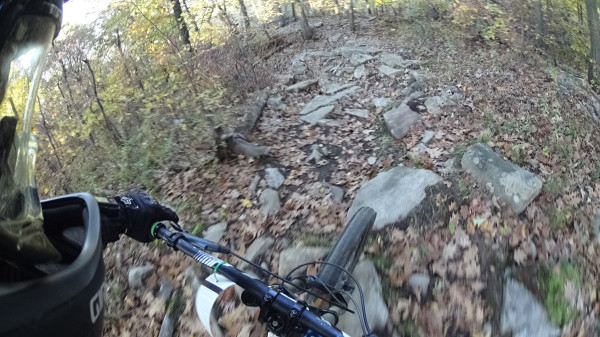
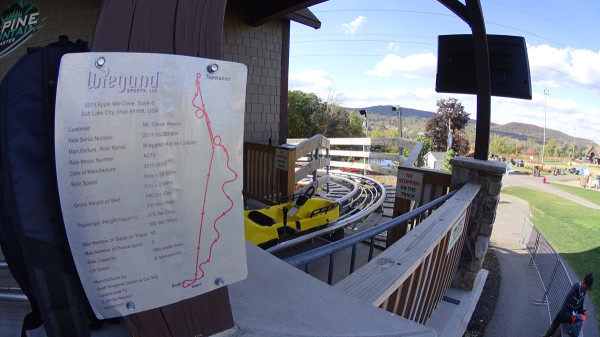
Our time so far with the camera has been good, but we’ve barely scratched the surface as far as the video features. Along with 6 different film modes including 1080/60p at 50Mbps HD and 4x slow motion at 720, the camera can live stream, create instant sequence shots, and overlay GPS data and speed over videos. Of course there are still photography modes as well including single shot and burst.
Available in stores next week, the Action Cam Mini will sell for $349.99 which includes the camera, the Live View remote, waterproof housing, mounts, battery, and charger. Based on what we’ve seen so far, that seems like a deal thanks to the ease of use the Action Cam Mini brings to the table. If you want a camera that’s easy to use, the new Action Cam Mini comes highly recommended.
Full specs and prices at sony.com. We’ll update the post with a few more videos as soon as they’re finished.
